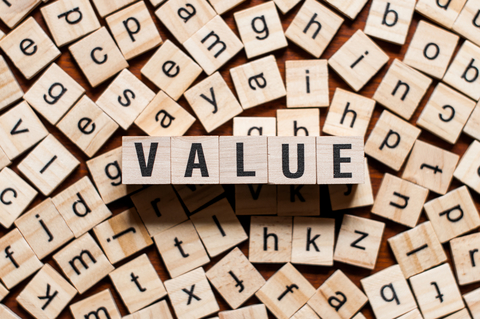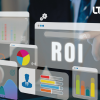
If you’re part of a learning and development (L&D) team, then no doubt you’ve been called a “miracle worker” at least once. In fact, L&D teams often have to “work miracles,” delivering programs for their stakeholders on short notice and with limited resources. For L&D, going above and beyond to meet the needs of their business partners is often part of the job.
How L&D meets those needs is also critically important. If the “how” isn’t right, then the L&D organization may run the risk of diminishing its impact on — and its strategic value to — the broader organization. In this article, we’ll explore why that’s true. We’ll also review five steps that can help L&D professionals better meet the needs of their learners and business partners as they increase their value and effectiveness as strategic partners.
Think Before You Jump
As mentioned above, L&D professionals are often asked to do things on short notice and with limited resources. The natural reaction is to pull the alarm, assemble the team and charge into action. Unfortunately, time and resource constraints often result in L&D professionals jumping to the training solution before they have the time to think through the business objective, identify the true learner needs or apply a scientific approach to the instructional design.
In situations like this, it is critically important to stop, take a step back, spend some dedicated time thinking about what it is you are being asked to do … and plan. When we react and “jump” before we think, evaluate and design, our chances of “working miracles” are slim.
So how do we get better at thoughtfully responding to business partners’ needs versus reacting to them? Well, let’s look at those five key steps. Over time, following these steps will help everyone: Learners, internal business partners and the L&D organization.
Key 1 – Take the Time to ‘Build the Bridge’
In a lot of ways, it’s the role of an L&D professional to build a bridge between marketing, sales, corporate leadership or any number of other business partners. To do this, we must focus on building strong working relationships that are built on trust, mutual respect and, most importantly, a clear understanding of each other’s work and responsibilities.
When we as L&D professionals research and understand our stakeholder’s business strategy, objectives, vision and workplace challenges, we improve our ability to identify key business factors that can inform the design of learning solutions. Demonstrating strong business acumen is critical to building the bridge. It shows you understand the complex situation at hand and can translate business objectives into the right behavioral, learning or performance objectives to determine the optimal program design. Ultimately, that drives better results and brings significant added value to the organization.
Key 2 – Explain the “Why” Behind Your Design to Your Internal Stakeholders.
Any good program design is grounded in adult learning principles, strong instructional theory and cognitive science. If this is true, then shouldn’t we tell our stakeholders that? If you think about it, we often explain the “what” of our designs but not the “why”?
When we only share the “what,” it is hard for the stakeholder to understand the value of the design or how it will drive learner engagement, knowledge retention and behavior change.
Think of it like the selling concept of features and benefits. When we only explain the “what,” we just discuss the features of a learning solution, but we fail to communicate its full value. When we share the “why,” we outline the key elements of the workshop (the features) and explain how those features will benefit the learners (and, by default, why you’re including them in the design). Using this approach greatly increases your value to your stakeholders, learners, and the organization.
Key 3 – Don’t Be Afraid to Respectfully Challenge.
Too often, stakeholders don’t value the time it takes to design and develop a successful workshop. On more than one occasion, I have heard, “It shouldn’t take that long to build a workshop, I just need X!”
In those situations, I respectfully challenge the stakeholder by translating what I do to what they do:
“Think about the last time you built an account plan or a value proposition or an evidence plan. Did you create those things without talking to anyone, doing market research, or going through several rounds of iterations? We face the same process when building robust and impactful L&D programs. So, in the same way I wouldn’t expect you to build a value prop in a week, I would hope you wouldn’t expect me to design a workshop in an unrealistic timeframe.”
There are other areas where I sometimes challenge stakeholders. For example, I might require them to prioritize content or skills to match the time allotted. Other times, I may provide reasons for recommending against a stakeholder’s request for a specific type of design if it’s not actually appropriate for the need at hand.
When challenging any stakeholder’s request, always be respectful. Give the reason why, indicate how your challenge is based on experience, and be solution oriented. Also, remember that just because you challenge doesn’t mean you win, but at least your stakeholder is aware of your concern and is choosing to move forward anyway.
Key 4 – Continuously Communicate and Align.
Has this ever happened to you? A stakeholder asks for a specific type of workshop, outlines the needs, the learners, and the time allotted … and then you go away for 6 weeks and come back with a fully-baked workshop. We’ve all done it at one time or another. But it’s very risky. It’s always best to work with the stakeholder along the way, gaining their input and buy-in. This builds a stronger relationship, produces a better result and avoids nasty surprises at the end.
For each program, the L&D team needs to create a project plan. It’s imperative to build in milestones where L&D and the stakeholder meet to touch base, review progress, collect feedback, ensure clarity and then move on.
Key 5 – Deliver the Project.
The final key is to successfully deliver the workshop (or whatever the learning program happens to be). It seems obvious, but it’s important to stress this point: There is tremendous value in actually doing what you say you’re going to do. It builds the team’s reputation as one that meets its commitments, and it enhances L&D’s overall standing in the eyes of learners and business sponsors alike.
When marketing biopharma therapies (or anything, for that matter), strong positioning is critical to success. This is also very true from the L&D team’s perspective. The team must position itself in the eyes of its stakeholders as a highly strategic group of L&D experts that does the right things … and does them extremely well.
Krista Gerhard is head of client services for Salience Learning. Email her at kgerhard@saliencelearning.com.








